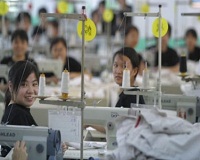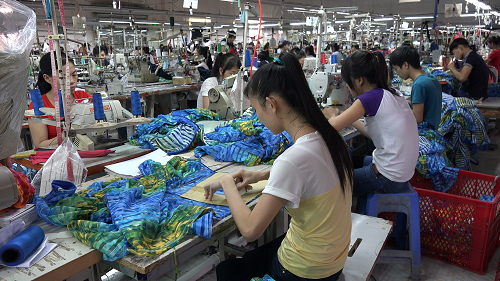"Year 2018 was a landmark in the history of global apparel manufacturing as China’s dominance declined due to rising labor costs, slower economy and the government’s desire to decrease exports and increase production for domestic consumption. However, China will continue to remain top supplier to the US for some time even though growth would be limited to single digits instead of high-single digit or double digit annual percentages."
 Year 2018 was a landmark in the history of global apparel manufacturing as China’s dominance declined due to rising labor costs, slower economy and the government’s desire to decrease exports and increase production for domestic consumption. However, China will continue to remain top supplier to the US for some time even though growth would be limited to single digits instead of high-single digit or double digit annual percentages.
Year 2018 was a landmark in the history of global apparel manufacturing as China’s dominance declined due to rising labor costs, slower economy and the government’s desire to decrease exports and increase production for domestic consumption. However, China will continue to remain top supplier to the US for some time even though growth would be limited to single digits instead of high-single digit or double digit annual percentages.
Apparel import sees marginal increase
According to the US Commerce Department’s Office of Textiles & Apparel (OTEXA), apparel imports by the US from China increased a meager 1.34 per cent in 2018 to reach $27.37 billion. Imports from Vietnam increased 5.78 per cent year-on-year to $12.22 billion, shipments from Bangladesh increased 6.65 per cent to $5.5 billion, imports from India rose by 3.42 per cent to $3.81 billion while Cambodia’s shipments increased 12.19 per cent for the year to $2.42 billion. US apparel imports from the world increased by 3.38 per cent in 2018 to $82.88 billion. Exports increased 6.38 per cent to $6.08 million, led by knitwear and bottoms.
Other countries gain more than China
A recent study by the United Nations Conference on Trade and Development (UNCTAD) shows, trade war benefited other countries rather than protecting the domestic industries in the US or China. The study further estimated, out of $250 billion Chinese exports, only 12 per cent will be retained by Chinese firms, and 6 per cent by US firms. Similarly, of the approximately $110 billion in US exports subject to China’s retaliatory tariffs, roughly 85 per cent will be taken by companies in other countries, while US firms will retain less than 10 per cent and Chinese companies will keep only 5 per cent.
While exports of countries like Vietnam, Cambodia, India and Bangladesh to the US will continue to grow, they are likely to be plagued by issues like labor and corruption as in the case of Brookfield Associates or protectionist measures or capacity problems like India or Vietnam.
plagued by issues like labor and corruption as in the case of Brookfield Associates or protectionist measures or capacity problems like India or Vietnam.
Duty-free manufacturing by the Western Hemisphere
Some sourcing managers are also worried about the suspension of duty-free status to Cambodia by the European Union over its labor and human rights issues. Meanwhile Central America has witnessed steady growth in recent times with Honduras attracting substantial demand. According to Hughes, the Western Hemisphere provides immense opportunity for “duty free, closer to home” manufacturing, including Mexico and the Central American Free Trade Agreement (CAFTA) countries and Colombia.
Imports increase 5.13 per cent
Imports from all CAFTA countries increased 5.13 per cent for the year to $8.34 billion. US yarn exports to the CAFTA countries increased 5.06 per cent to $1.68 billion, while fabric exports increased by 6.05 percent to $962.7 million.
Imports from Mexico declined 5.76 per cent in 2018 to $3.36 billion. This decline could be attributed to the uncertainty of its duty-free status as the US, Mexico and Canada were renegotiated the North American Free Trade Agreement, which resulted in the trilateral US-Mexico-Canada-agreement signed in November and pending legislative approval. African countries like Ethiopia, Lesotho, Mauritius and Ghana also continue to grow on account of increased investment in African factories and infrastructure from US and Chinese companies. Thus, though certain countries witnessed prominent increases in apparel business, China continues to dominate with its quality products and timely delivery.












